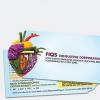Hi Bansal,
They would be regarded as suppliers of materials and suppliers of services under the BRCGS Global Standard for Food Safety Issue 9. Initially you will want specifications for both to ensure that they will meet the requirements of the standard.
The extent of the controls required would be dependent on your product category and would be more stringent for high-care/high-risk. I have quoted relevant parts of the BRCGS Standard below, you will see that self-audit questionnaires may be acceptable where low-risk products are manufactured, whereas for high-care or high-risk areas, the laundry needs to be audited either directly or by a third party.
For Clause 3.5.3 Management of suppliers of services does mention laundry services, BRCGS Guidance states:
Approval may include a combination of the following:
• membership of a recognised trade association which specialises in the service provided (e.g. pest control)
• historical experience with the supplier
• legal registration (e.g. waste licences)
• third-party certification to a recognised standard (e.g. the Global Standard Storage and
Distribution)
For Clause 7.4 Protective clothing: staff or visitors to production areas:
Clause 7.4.2 requires that protective clothing is of suitable design to prevent contamination of the product (at a minimum containing no external pockets above the waist or sewn-on buttons)
7.4.3 Protective clothing shall be laundered by an approved contracted or in-house laundry using defined criteria to validate the effectiveness of the laundering process.
BRCGS Guidance:
External contracted services must be incorporated within the company’s purchasing supplier approval programme (clause 3.5.3.1) and have systems of approval and continual assessment to ensure that the process is under control. This should be based on risk assessment and may include self-audit questionnaires where low-risk products are manufactured.
8.7 Protective clothing in high-risk and high-care zones
BRCGS Guidance:
8.7.1 Therefore laundries (both in- house and contracted) must ensure that:
……
• clothing is commercially sterile following the washing and drying process. This means that any vegetative forms of micro-organisms associated with food poisoning and/or spoilage must have been removed. To achieve this, a garment should be laundered at a temperature no lower than 65°C for a minimum of 10 minutes, or laundered at a temperature no lower than 71°C for a minimum of 3 minutes, or in accordance with local regulatory requirements
….
Note BRCGS Global Standard for Food Safety Issue 9 Clause 8.7.2:
Where protective clothing for high-care or high-risk areas is cleaned by a contracted or in- house laundry, the laundry shall be audited either directly or by a third party. The frequency of these audits shall be based on risk.
Kind regards,
Tony













